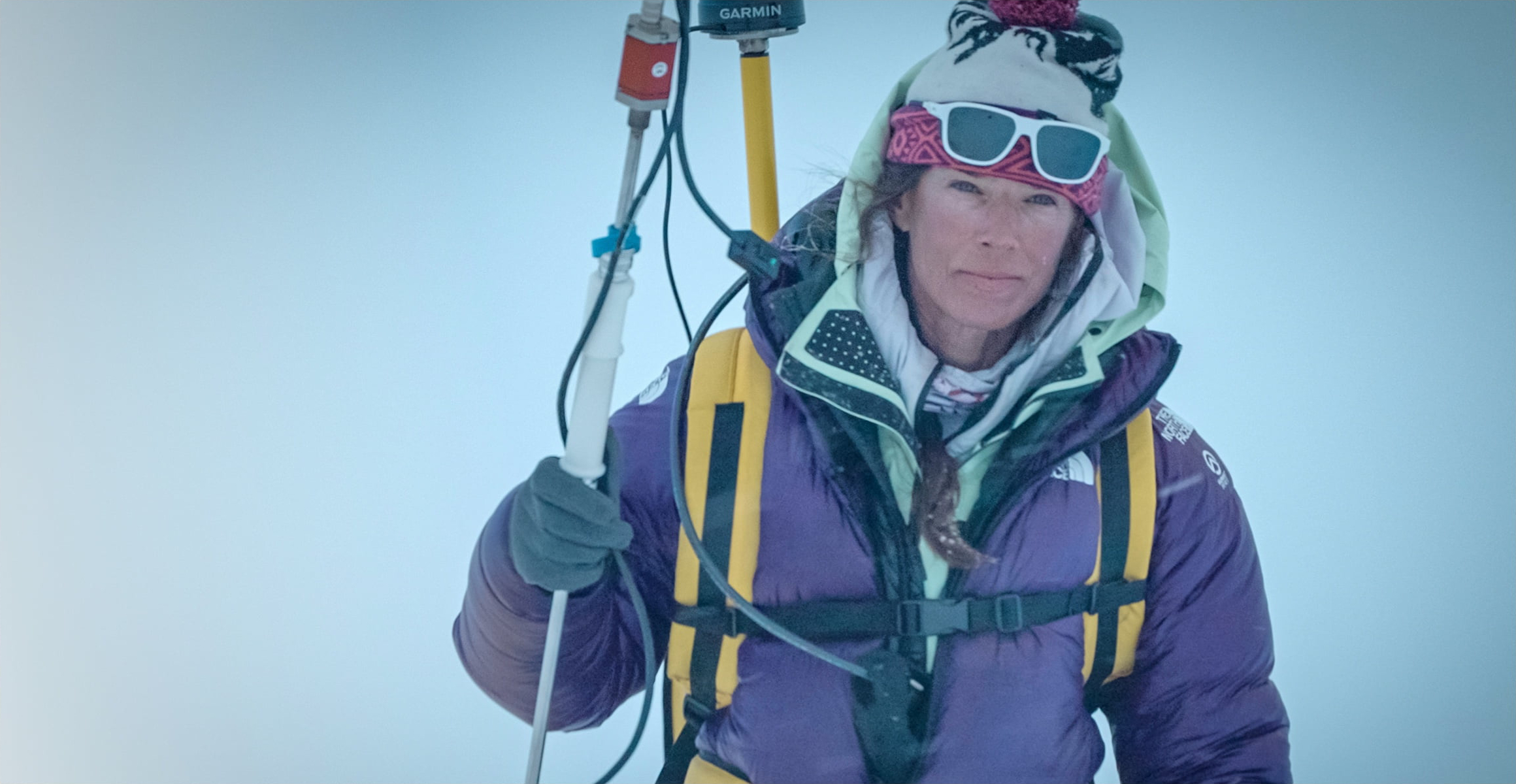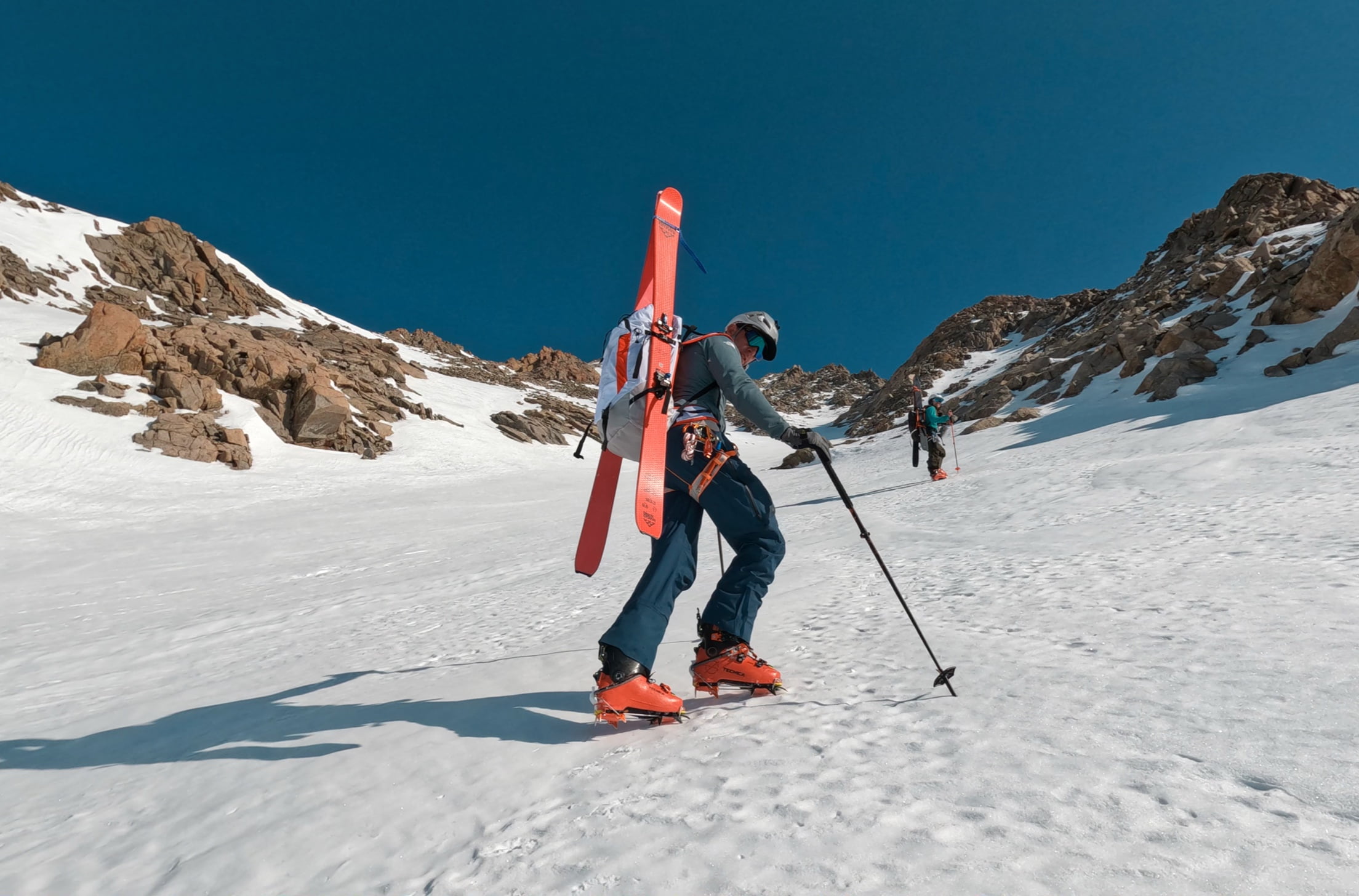Beyond the summit

A conversation with Kit DesLauriers, going behind the scenes of her new film "Beyond The Summit" about climate change in Alaska's Arctic Refuge.
Interview by Connor Davis
Please, accept marketing cookies to watch this video
Kit DesLauriers is one of the most famous ski mountaineers on Earth—with enough accomplishments to fill a museum. She’s the first person to ski the highest peak on every continent, also known as the Seven Summits. She pioneered first descents on Mt. Everest, Aconcagua, Antarctica’s Vinson Massif and New Zealand’s Mt. Aspiring. She was named National Geographic’s Adventurer of the Year. The list goes on and on.
But none of Kit’s challenges compare to fighting climate change. Across her career, she has become increasingly involved and respected in the environmental world. And in her latest film, “Beyond The Summit”, Kit brings this passion forward in a worrying, yet inspiring way. With an all-star crew, she skis across Alaska’s Arctic Refuge with a research mindset—in an effort to stop oil drilling in this sacred region.
We caught up with Kit to hear about her relationship with the Arctic Refuge, what sparked the inspiration for this film, and how we can all do more to protect our planet.

HOW DID YOU FIRST HEAR ABOUT THE ARCTIC REFUGE?
KIT: I first heard about the Arctic Refuge in 1980, when I was just 10 years old. An act was passed by Congress called ANILCA: The Alaska National Interest Lands Conservation Act. This designated a massive area as the Arctic National Wildlife Refuge, which was really exciting. But congress was also deciding whether or not to drill for oil on the coastal plain of the Arctic Refuge at that time. And the juxtaposition of designating this land as protected, but also finding ways to drill for oil, was very unsettling to me.
Thirty years later, in 2010, as the world kept changing and I was looking for meaningful ski objectives—we went up there to climb and ski as many of the highest mountains as we could. The trip was partly just to ski, but also to go across the coastal plain—where big oil was still trying to drill—and see what was going on out there.”

WHAT DID YOU LEARN ON THAT FIRST TRIP?
KIT: On that trip in 2010, I met a scientist named Matt Nolan, and he showed me some shocking data around climate change in this part of the world. When these glaciers are melted, perhaps in about a hundred years, there won't be any more water flowing north to the Arctic Ocean, or to the Beaufort Sea. And that will have a complicated effect on so many different ecosystems.
The more pressing concern became the melting permafrost layer—and how when you drill for oil with really heavy equipment, then you are damaging the tundra, damaging the permafrost, accelerating the melting, and releasing more greenhouse gasses.”

HOW DID YOU FEEL AFTER THAT FIRST EXPLORATION?
KIT: “I felt like we had an opportunity to leave a different history on this last great expansive public land, than we have anywhere else in our westford migration in this country. For starters, that means allowing indigenous people to continue to live the way that they've always lived in harmony—while protecting the rest of the world by fighting climate change at large.
And here’s what really shook me: There’s only about one year’s worth of oil for the United States out in this wilderness. One year’s worth. And people are willing to destroy it all, just for that. “

WHAT LED YOU TO CREATING YOUR NEW FILM, “BEYOND THE SUMMIT”?
KIT: “I visited the Arctic Refuge many more times over the years, and I got new pieces of information and observation every time. In 2017, congress passed a mandate to actually allow drilling there after decades of controversy. So of course, I got deeper into the advocacy and understood exactly what conditions were needed to allow drilling. And basically they need at least a nine-inch snowpack on the ground in order to legally operate.
I started to fixate on this nine-inch average because, in my experience, there was not always nine inches of snow or ice out there at all. So with this film, we set out to find if there really is a nine-inch average. Because if there’s not, these companies should not be out there drilling. “

HOW DO WE ALL HELP IN THIS FIGHT FOR OUR CLIMATE?
KIT: “I think we can do better by realizing a lot of our progress is gained by the average person's observations and actions. Whether that means learning more about the birds and the bees, or digging into climate figures in your region, or standing up for indigenous rights.
Maybe you can wonder if your ski resort could start using wind power. Or what sustainability practices you can build into your life: eliminating single-use plastics; driving EVs; or changing your home’s fuel source. It really depends on what interests somebody in their life; they have to be interested first, to really care. And we all have to embrace that no amount of change is too small.”

WHAT’S YOUR PARTING MESSAGE TO SKIERS READING THIS?
KIT: “I want the world to stand up for justice in all of its forms. This is why I care so deeply about indigenous people continuing to live in their traditional ways. And why I care about reversing climate change. And why I care about keeping habitats in their natural state for those incredibly special—and in some cases, very unique—species of animals that rely upon the Arctic Refuge.